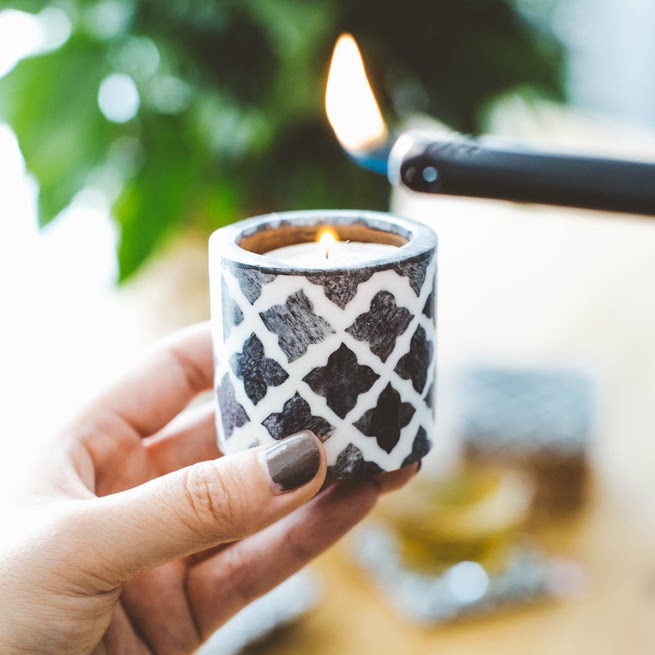



















Consider an animal that has died naturally. What becomes of its incredible horns? In Sambhal, artisans have been carving and transforming this valuable waste material into beautiful, intricate objects for generations.
During the days of British rule, horn hair combs were all the rage. Post-independence, the carving industry has grown and diversified. With a decreased horn supply, artisans now work with animal bone. And, they make much more than just hair combs.
Rehemat, 22, is one of the artisans responsible for crafting your new box. Cladding, to be precise. She encases 50 boxes per day with smoothed bone shards. Rehemat uses her income to pay for her parents’ medical expenses, as well as to save for her own wedding.
Suggested use: Fill with candy, photos, playing cards, your haphazard coin collection, or some other treasure...
The carving of horn and bone is not the only craft with a long lineage in India. The wood of your new coasters also stands atop a vast lineage of woodworking. In fact, archeologists have found remains of carved wooden pieces in India dating back to the 3rd century!
Generations ago, Kashmiri carvers and carpenters migrated south in search of work. They set up shop in Saharanpur and a community of woodworkers has thrived there ever since.
To get a sense of Saharanpur, picture narrow alleys winding toward busy workshops where artisans saw, sand, and cut their wood into myriad shapes. Look up and you’ll see them, sitting on terraces, chatting away as they casually continue this most ancient of Indian trades.
Suggested use: Why keep these gems in a drawer? When not in use, stack atop your coffee table as decor.

Many of the artisans working in the bustling workshops of Saharanpur come from families of woodcarvers. The workshops themselves have been passed down from grandfathers. And while these grandfathers once fashioned large, elaborate centerpieces that served as signs of wealth and power for their owners, today’s artisans work on a smaller yet equally ornate scale. Hence, your new tray.
Although woodworking was once taught in schools, these days the trade is primarily passed down. Mohammad Ayub has been a carver for over 20 years, and learned simply from a man who lived in his neighborhood.
Mohammad’s workshop is thriving, employing anywhere from 50-200 artisans as the work comes in. What’s more, these artisans get paid more per day than Mohammad did per month when he started!
Suggested use: Contain keys, phone, and/or wallet while at home. Or, place your candle holder on your tray and let the wood and bone complement each other.

In the same way that past artisans of Sambhal once carved the horns of fallen animals into elegant treasures, today’s artisans carve the bones of animals that have been slaughtered for their meat.The making of your new candle holder was an intricate process indeed. Ample skill is required to saw, file, and set all the tiny pieces into their exquisite final place.
With fewer youths interested in this ancient work, many bone artisans are now over 60. Yet Ruksar, along with her sister Rehemat, are examples of two young women carrying the work forward. Like Rehemat, Ruksar works in cladding, and is using her income to pay for her parents’ medical expenses, as well as to save for marriage.
Suggested use: Accent bedroom, bathroom or living room. Ideally, place in the vicinity of your other bone objects to get the full effect of their unique style.